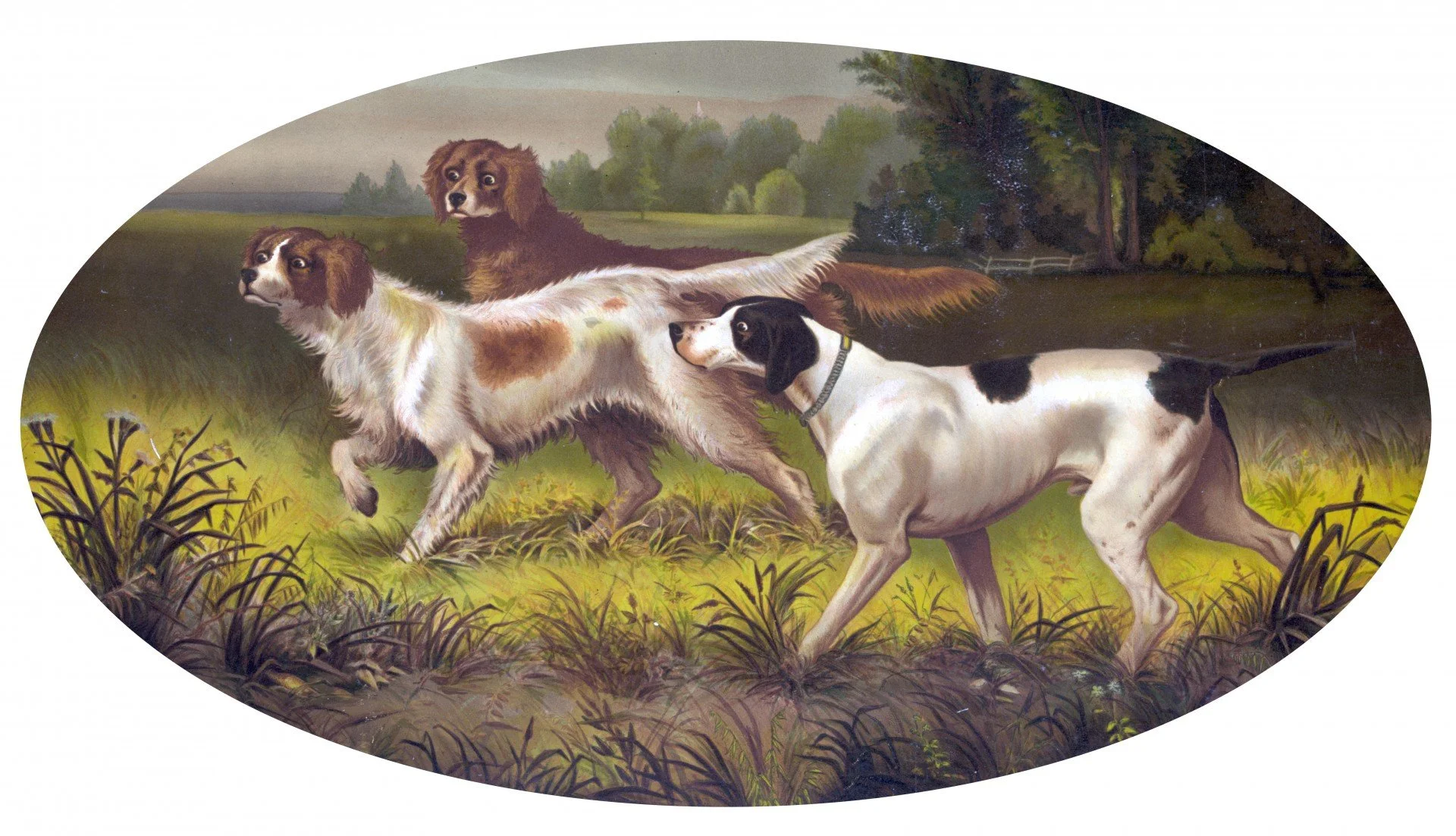
Bose
“Dogs Hunting Beautiful Painting” by Karen Arnold, image in public domain
From A Narrative of a Revolutionary Soldier by Joseph Plumb Martin
Campaign of 1781, Yorktown
“Our duty was hazardous but not very hard. As to eatables, what we could not get from the public stores, we could make up in the woods. We had a large dog that we had brought from West Point; we had no more to do than go into the woods, which were quite handy, and when we came across the trail of a shoal of hogs, to set off old Bose, when we soon heard a crying out, and it was generally made by a black one, he having a particular regard or antipathy (he never told us which) for that colour.”
Martin’s regiment moved frequently during the War and passed multiple times through the Highlands of New York. In 1778, he was promoted to the rank of corporal and was stationed briefly at West Point in 1779. A rather crazy incident with a run-away wagon wheel took place there, set free by Martin and his fellow bored co-conspirators down a hillside, nearly destroying a hut and bombarding the officers inside. At the last second, it hit a bump and flew over the hut, thus saving everyone and Martin’s hide.
During the summer of 1780, he joined the newly formed engineering corps known as the Sappers and Miners, holding the rank of sergeant. It was during this time that Martin was stationed the longest at West Point. His unit worked on the construction of the fortifications on Constitution Island, which were immediately on the eastern bank of the Hudson River. This site protected the Great Chain from the eastern bank. Martin also wrote about the Traitor-Who-Shall-Not-Be-Named and potentially witnessed an early encounter of the Traitor with British Adjunct (and spy master) Major John Andre.
As the passage above from Martin’s memoir implies, the Sappers and Miners were present at Yorktown—the last major battle of the War—where they dug the trenches before participating in the siege.
Martin’s description of Bose’s preference for black hogs is what inspired the events by the river. It just cried out for a backstory.
Because the above passage is all that we know about Bose, I researched dogs that were available in the United States during the War. Benjamin Franklin’s son, William, had a black Newfoundland that was apparently remarkable. Frankling wrote, “Nothing shall tempt me to forget your Newfoundland dog.” Perhaps he lost a shoe or supper during the visit!
In the article in which I learned of the dog, by PhillyMag.com, there was a painting by Sir Edwin Henry Landseer called, “Lion: A Newfoundland Dog.” The painting is not in the public domain but is searchable online. Bose in The General’s Watch is described as the dog in the painting, puppy-sized but equally mischievous.
In the painting at the top of this page, a similar Newfoundland (red splotches, not black) can be seen on the far left.
Easter Egg: 8